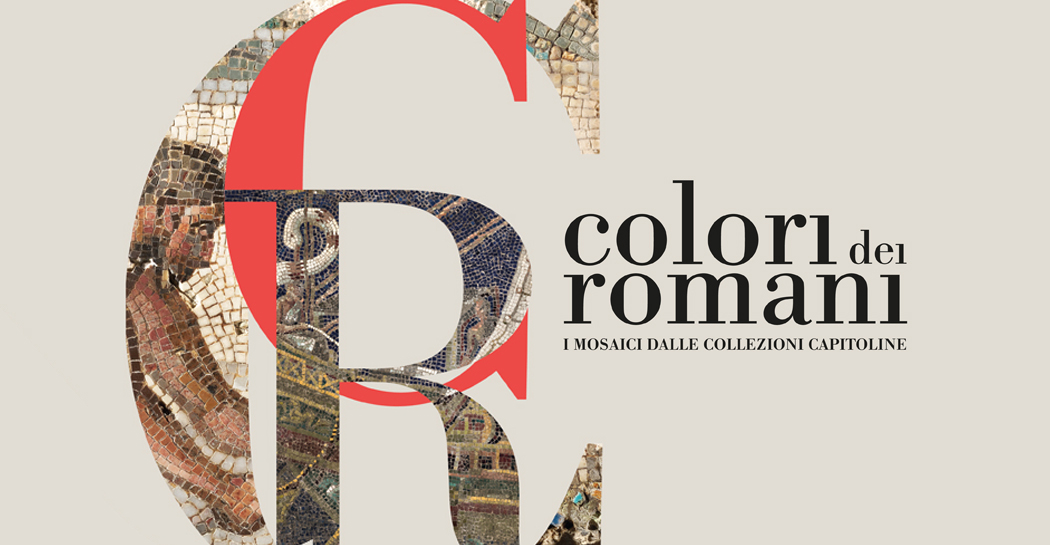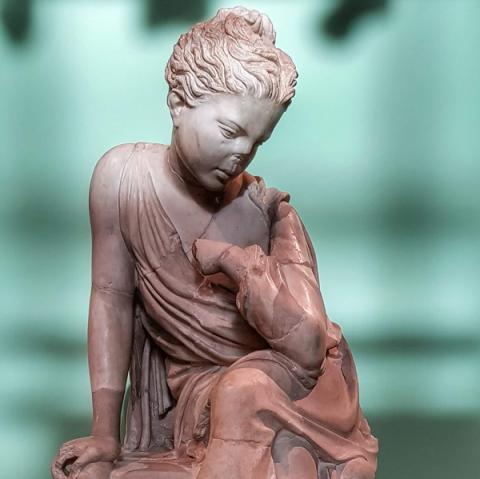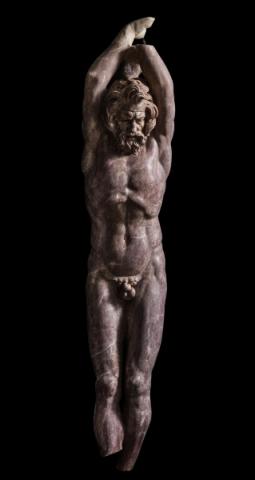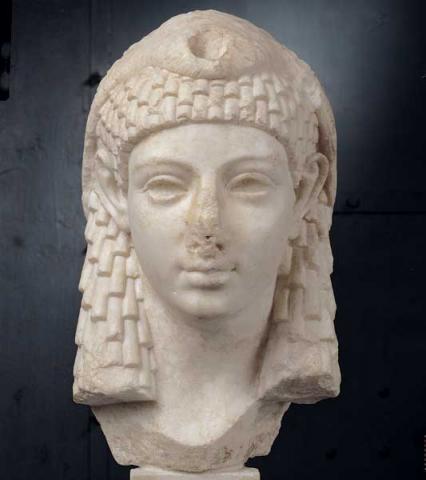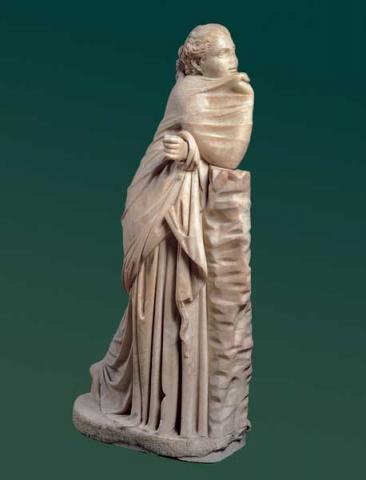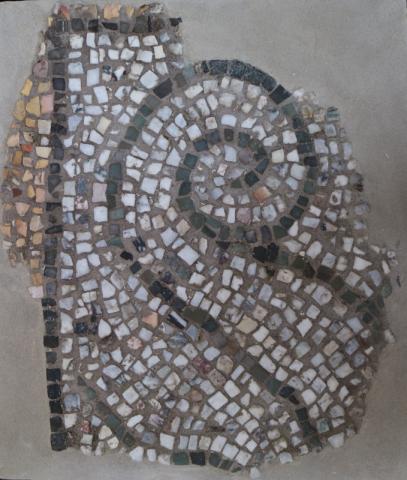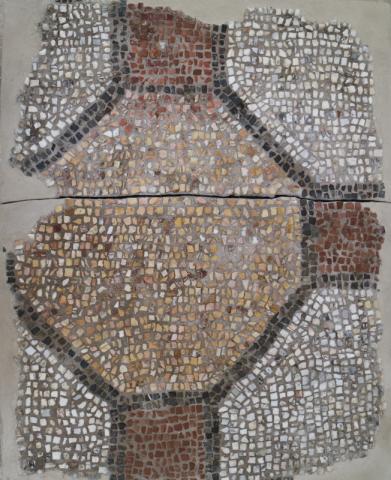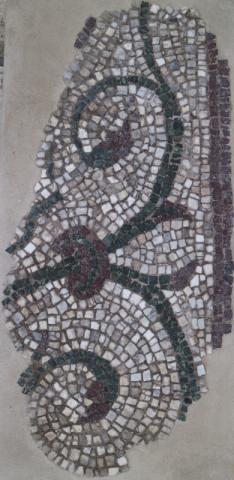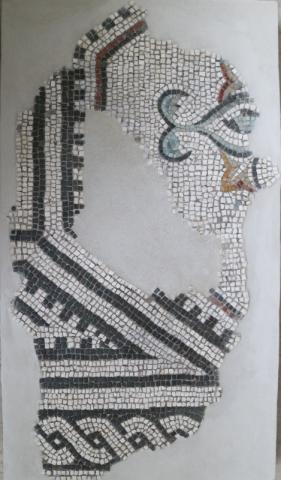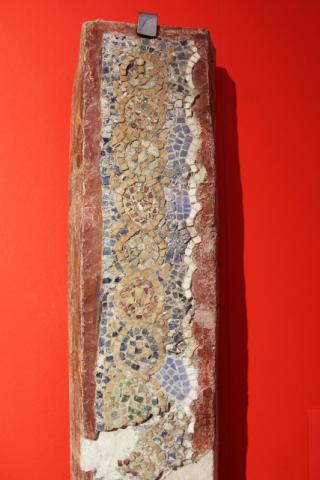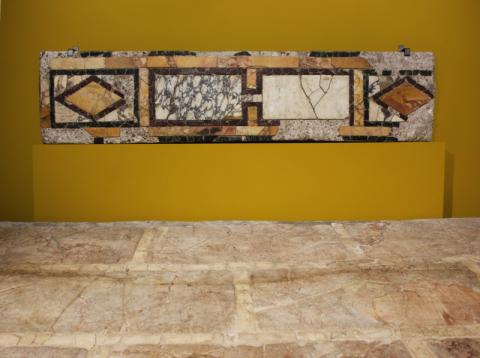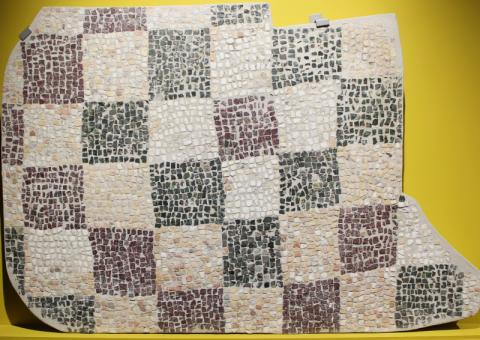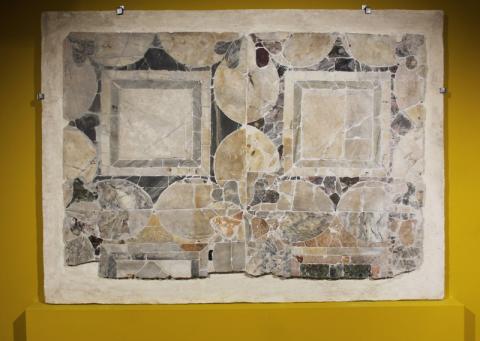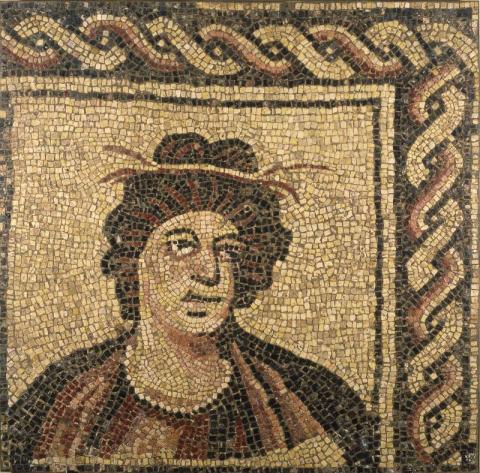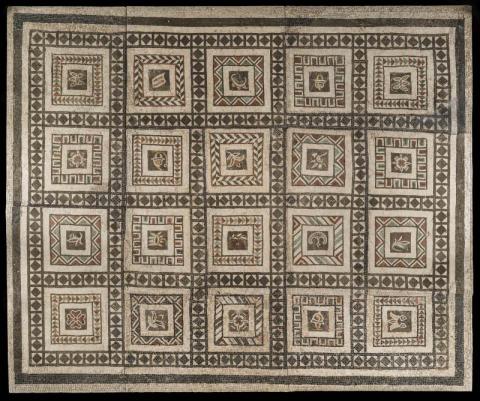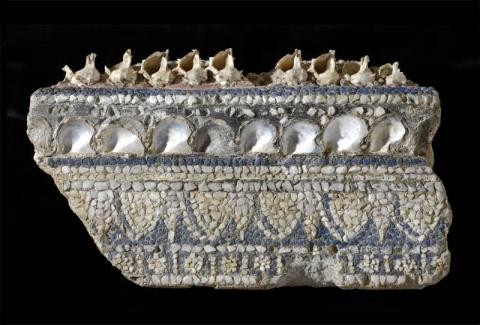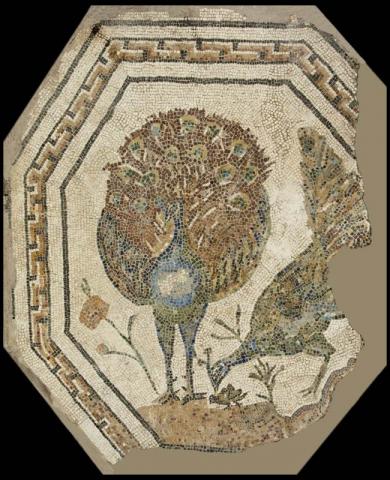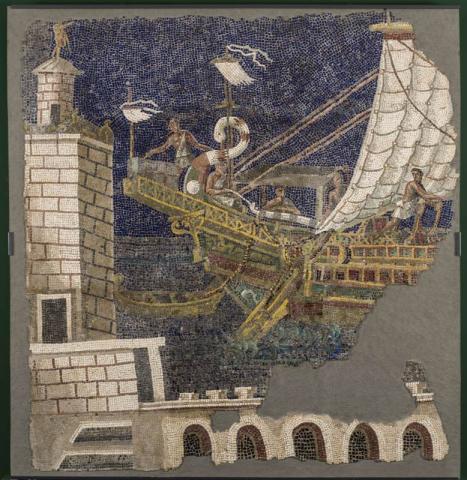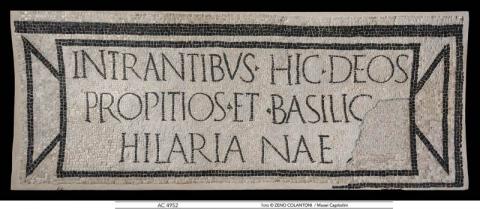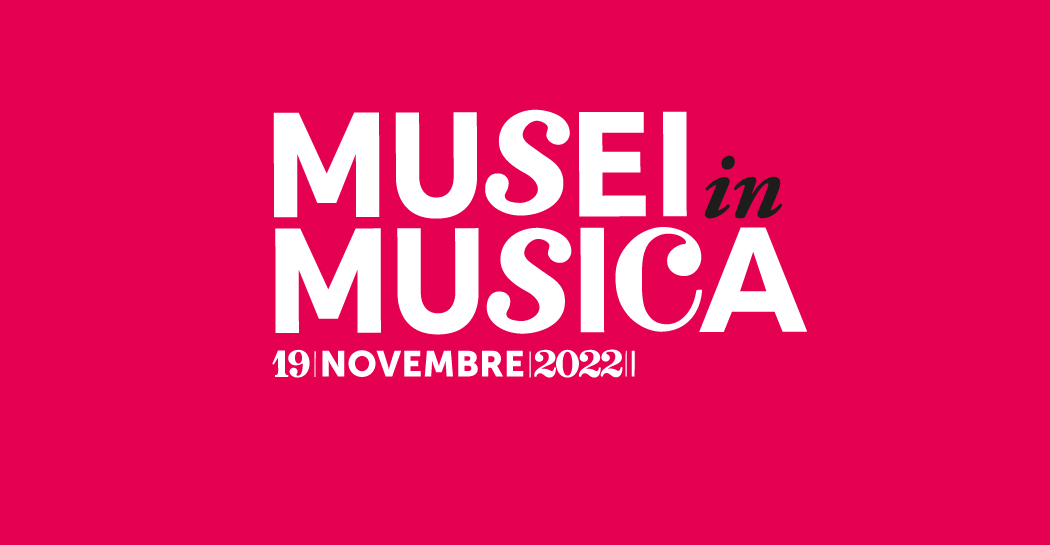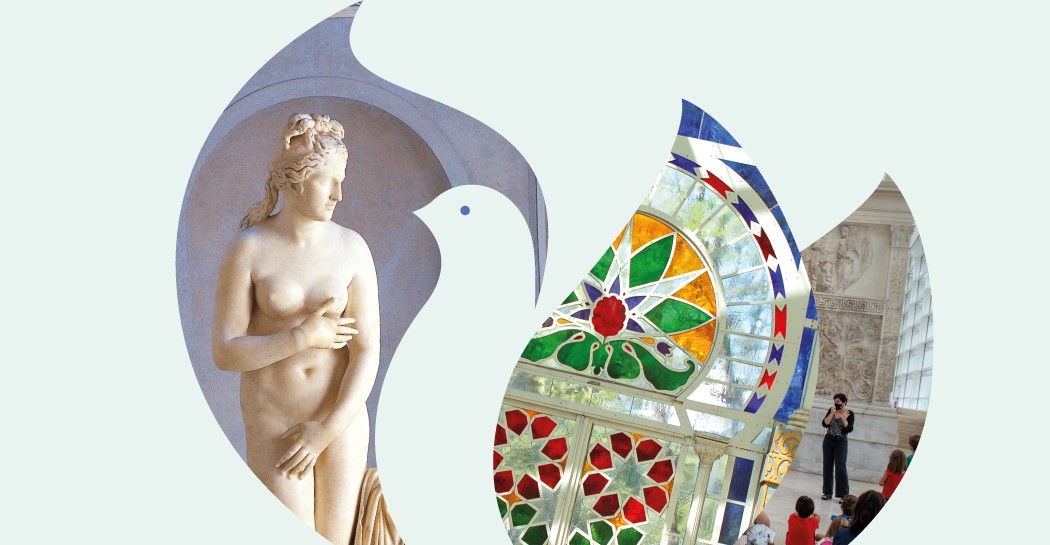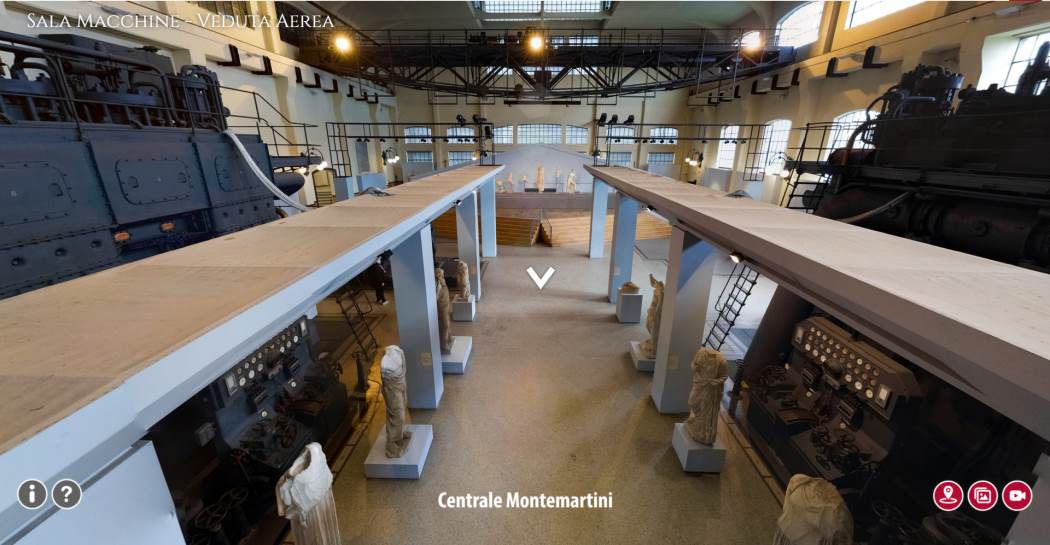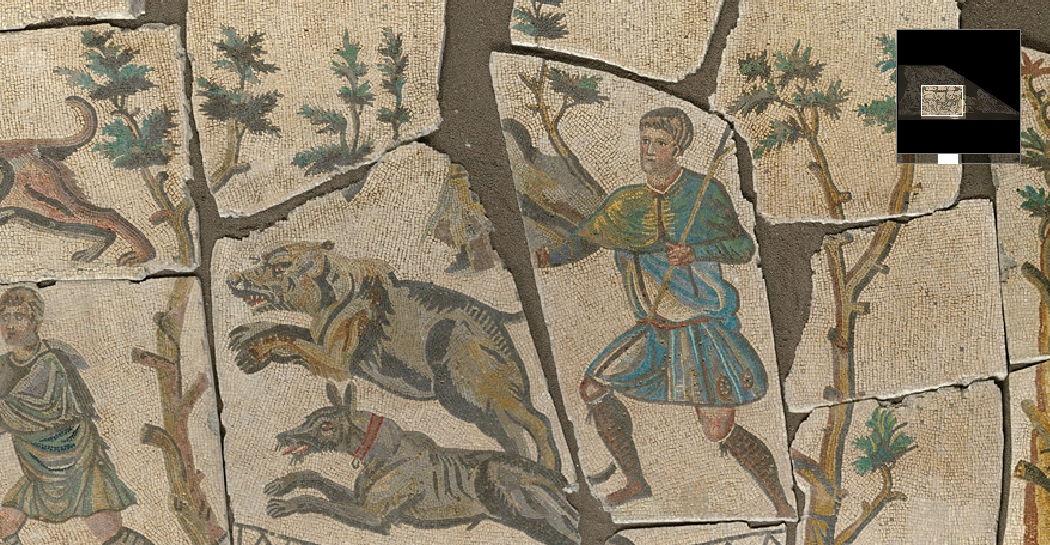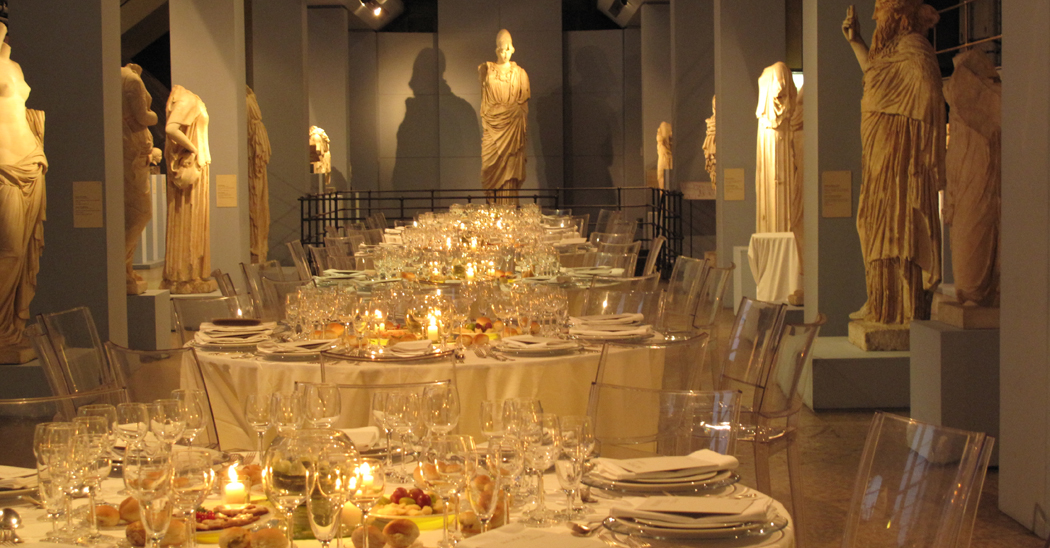Colori dei Romani. I mosaici dalle Collezioni Capitoline
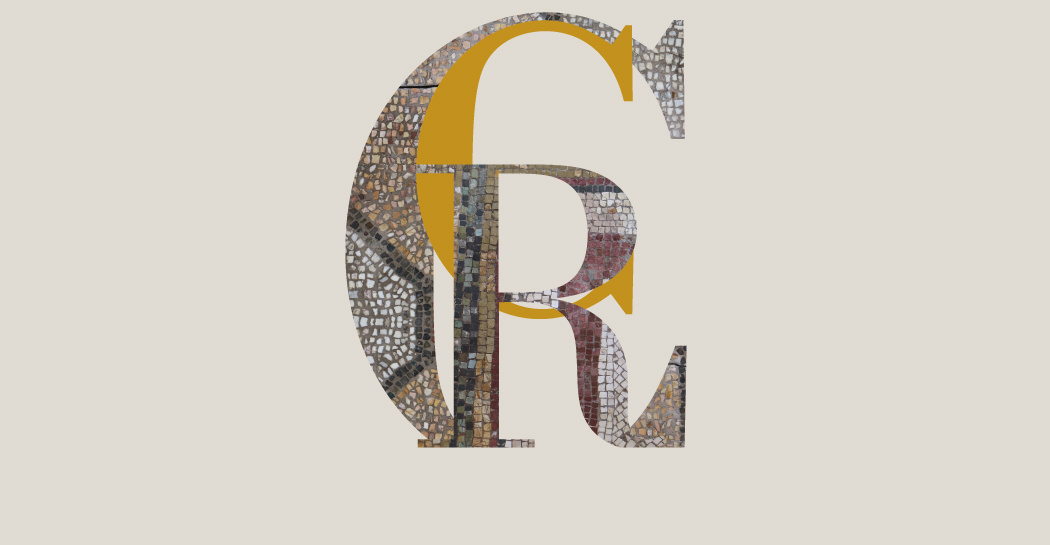
On 14 March, the third phase of the exhibition opens, the exhibition is enriched with sixteen newly restored and never before exhibited works. With this latest group of works, the exhibition's narrative extends its chronological arc to the Late Antique period.
An important event to tell, through the colourful texture of these works, passages of the history of the city of Rome, illustrating in the most complete way the original contexts of their discovery. Alongside the mosaics, frescoes and sculptures are also on display, which together with them constituted the furnishings of the buildings they came from; this overall presentation allows us to interpret the iconographic choices, decorative motifs, and formal appearance of the works as an expression of the taste and needs of the patrons.
The rich and precious archive documentation accompanying the works on display illustrates the discoveries with historical photographs, watercolours and drawings, testimonies that help to tell the story of the climate and circumstances that led to these discoveries: the urban transformations and building fervour that characterised the history of Rome between the last decades of the 19th century and the first decades of the 20th century, when, in parallel with the progressive expansion of the city to meet its new function as the capital of Italy, one of the most "fortunate" pages of Roman archaeology was written.
Some of the mosaics on display at the Centrale Montemartini were presented in 2019 in a highly successful exhibition held in three locations in the Balkan region: the first and second entitled 'Colourful Visions of Ancient Rome. Mosaics from the Capitoline Museums" in the National Archaeological Institute with Museum at the Bulgarian Academy of Sciences in Sofia (16 May-3 August 2019) and in the National Gallery of Armenia in Jerevan (9 August-29 September 2019), the third entitled "Ancient Rome in Colour. Mosaics from the Capitoline Museums" in the Museum of Georgia Simon Janashia in Tbilisi (10 October-10 December 2019).
The exhibition is divided into four thematic sections, within which the route follows a chronological order.
SECTION 1. The art of mosaics among the Romans. History and Technique
The first section introduces the history of mosaic art. The selected works represent all types of floor and wall mosaic decorations, illustrating through techniques, materials, colours, decorative motifs, the stylistic evolution and transformation of mosaic art over time. From the simplest decoration to the most complex narrative, the mosaics on display are the highest and most refined expression of technical skill and artistic inspiration.
From 24 November 2021: new colourful textures made of large tesserae of precious polychrome marble characterise two new mosaics included in the first section, both dating from between the 3rd and 4th centuries AD. The first features a chequerboard pattern with squares of different colours, while the second is decorated with a more complex composition of geometric and floral motifs. Tiles of precious marbles, basalt and red porphyry, create an effective chromatic contrast.
SECTION 2. Living and dwelling in Rome between the end of the Republican Age and Late Antiquity: luxury dwellings and domestic contexts
The second section, marked by the colour green, presents mosaics from luxury dwellings, which characterised some areas of the ancient city from the Republican age onwards. The itinerary follows a chronological criterion, passing from the oldest specimens - such as the large polychrome coffered mosaic, discovered at the Villa Casali on the Caelian - to more recent ones, up to the 4th century AD, the period to which the mosaic with a bust of a season belongs, perhaps part of the floor decoration of a building that was part of the property of Emperor Gallienus. A scenic backdrop to this section is the extraordinary wall mosaic with the scene of the departure of a ship from the harbour, a precious ornament of the domus of Claudius Claudianus, a wealthy residence that stood on the Quirinal in the second half of the 2nd century AD. The wealth of the house was ostentatious with precious sculptures and sumptuous furnishings, which are presented for the first time in this exhibition as evidence of the owner's social prestige, taste in living and need for self-representation.
From 24 November 2021: this section will be expanded, welcoming new works into its spaces. Among these is the large floor mosaic with coffered decoration, from a luxurious domus that stood on the Aventine in the Republican period. The exceptional state of conservation of the mosaic shows the floor intact in all its parts.
SECTION 3. The spaces of the sacred: the Hilarian Basilica
The Basilica Hilariana, seat of the college of priests assigned to the cult of Cybele and Attis, is an emblematic example of a decorative apparatus in which all elements of the furnishings contribute to the narration of the context and its function. The first archaeological remains of the Basilica Hilariana came to light between 1889 and 1890 during excavations for the construction of the military hospital on the Caelian. The building had incredibly preserved in situ a set of artefacts significant for the very identification of the monument, including two extraordinarily well-preserved mosaics, exhibited in the section. Manius Poblicius Hilarus was the wealthy pearl merchant who bore the financial burdens for the construction of the basilica that took its name from him; on the threshold of the building, the mosaic inscription reads: 'To those who enter here, and to the Basilica Hilariana, may the propitious gods be with you'. We also know the face of the generous benefactor: in fact, his portrait and the base of his statue, placed at the entrance of the building, have been preserved. At the time of the extraordinary discovery, it was carefully documented with watercolour plates, which are also displayed in the exhibition with all the elements of the sculptural and mosaic decoration.
SECTION 4. The mosaics of the funerary buildings in the necropolises of the suburbs of Rome
In the sepulchral repertoire, the decoration - be it figurative themes, ornamental motifs or mythological subjects - is always aimed at exalting the qualities of the deceased and evoking the fundamental collective values of Roman society. The mosaics presented in this section are all chronologically framed in the 2nd and 3rd centuries AD and come from funerary contexts located in the suburban areas of the city. With its vivid colours, the octagonal mosaic with peacocks is an emblematic example of a decorative motif charged with eschatological and salvific meanings: the peacock, a bird sacred to Dionysus, loses its tail every year and puts it back on in spring as the flowers bloom, alluding to regeneration beyond death. Archive documents accompanying the exhibition show the context of its discovery: the mosaic was the central part of the floor of a rich family tomb located along the Appian Way.
From 24 November 2021: The section includes further unpublished works, including a black and white mosaic featuring a lively decoration with figures of cupids surrounded by acanthus branches. The mosaic was the floor of a tomb discovered in Rome in 1936 during excavations for the construction of a church near Trastevere Station; the burial building was part of the necropolis that stood along the Via Portuense in Roman times.
New SECTION "The Colours of Marble"
From 14 March 2023: with a group of 16 newly restored and never before exhibited works, the exhibition's narrative extends its chronological span up to the Late Antique period and proposes types of artefacts hitherto absent from the exhibition: large marble mosaics and opus sectile. An expression of luxury since the early imperial age, the use of coloured marble became increasingly popular during the years of the empire's greatest expansion, becoming customary in the private sphere and in public, civil and sacred architecture. In the Rome of the 3rd and 4th centuries A.D., the great availability of coloured marbles and the leftovers from large construction sites were used for various purposes, including the creation of mosaic tesserae. It was in this period that a special category of large tessellated floor mosaics was created, made from particularly precious materials: porphyry, serpentine, portasanta and antique yellow.
Information
From April 27 2021 extended to June 25, 2023
From Tuesday to Sunday 9.00-19.00
Last admission one hour before closing time
Closed
Monday, 1 May, 25 December
Before planning the visit, CONSULT THE NOTICES
From 24 November 2021 the exhibition will be enriched with six new works
From 14 March 2023 the exhibition will be enriched with sixteen new works
060608 every day from 9.00 to 19.00
The exhibition is curated by Claudio Parisi Presicce, Nadia Agnoli e Serena Guglielmi
The design and direction of the exhibition is by the architects of the Sovrintendenza Roberta De Marco e Monica Zelinotti, with the collaboration of Maria Cucchi e Simonetta De Cubellis
Promoted by
Roma Culture, Sovrintendenza Capitolina ai Beni Culturali
Organisation
Zètema Progetto Cultura
Short guide
Campisano Editore
Catalogo
Press Room
Gallery
Documents
Eventi correlati
1012071
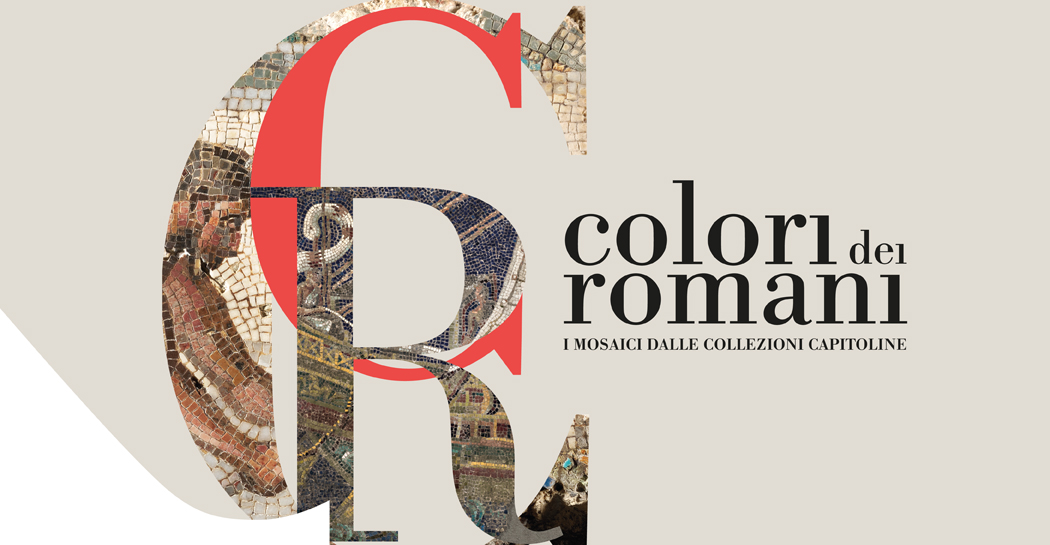
1012070

1011967
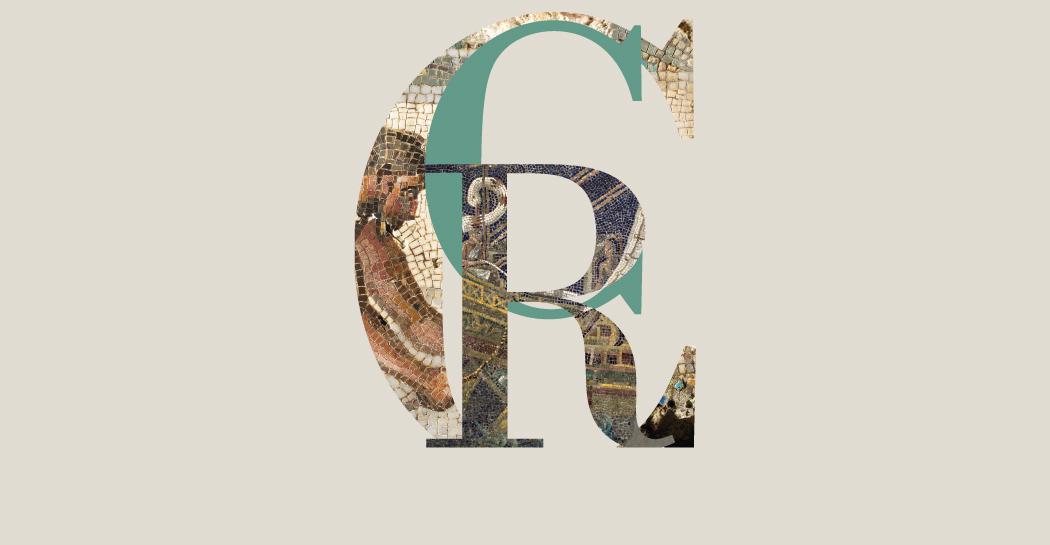
1011618
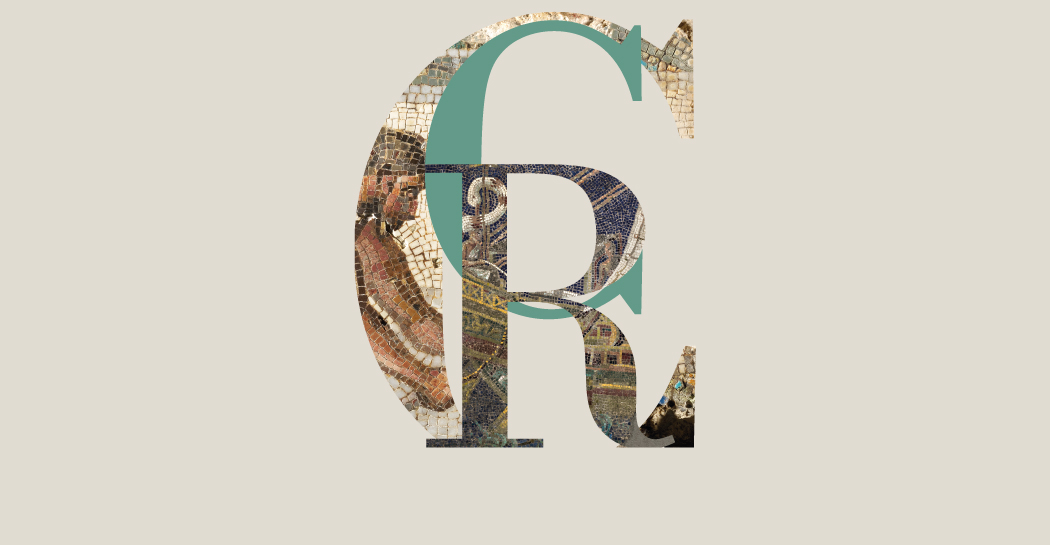
1011617

1011616

1010557
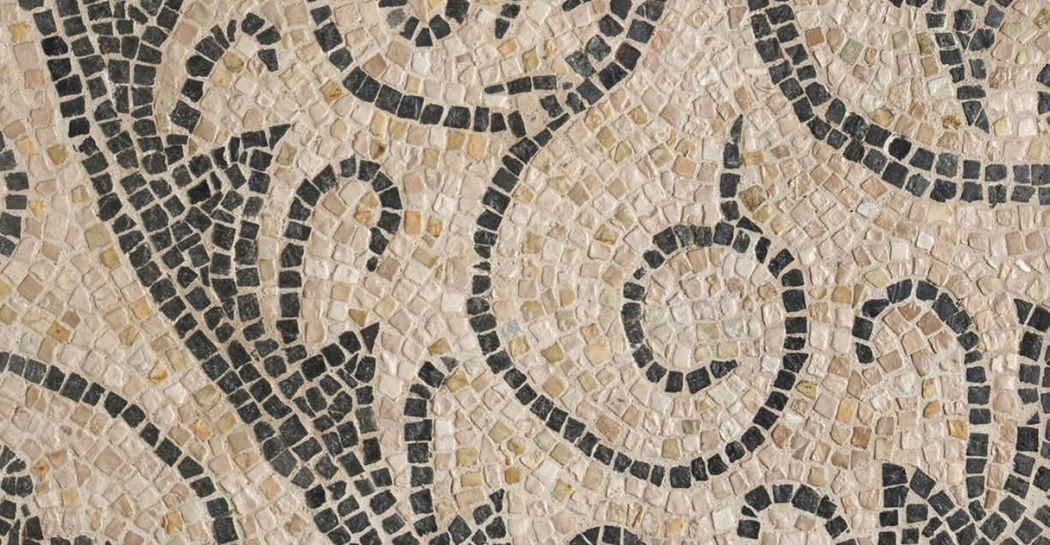
1009901
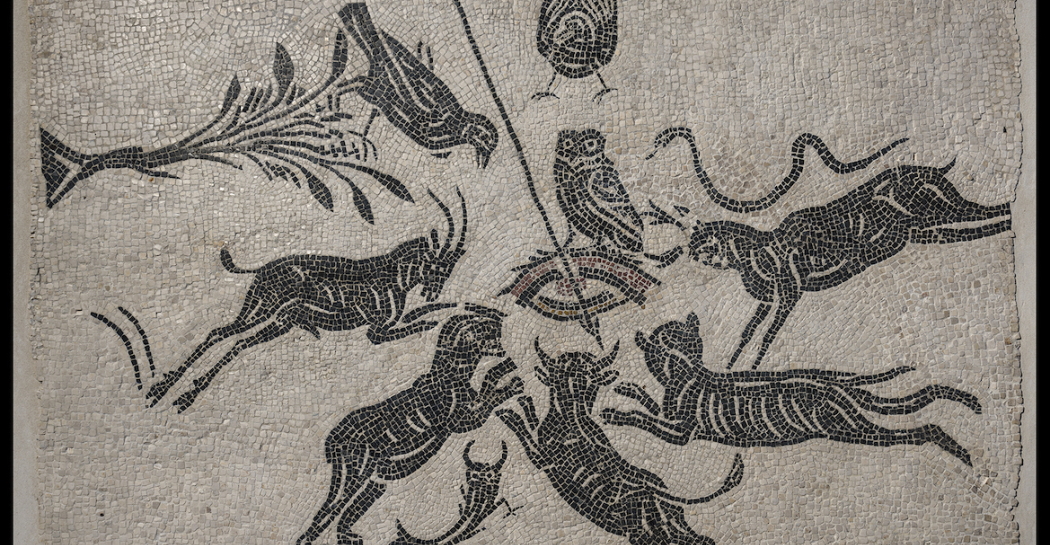
1009779
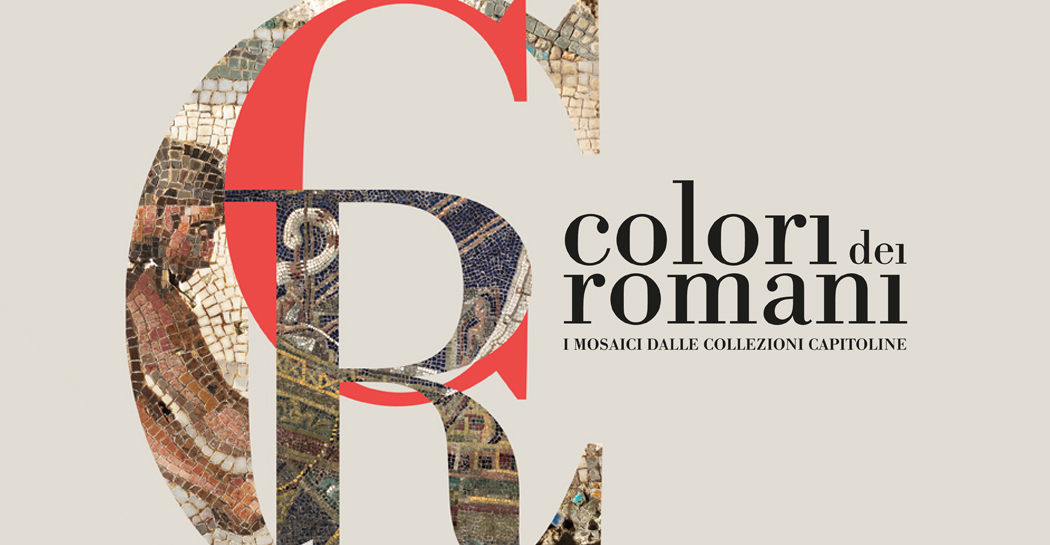
1009648
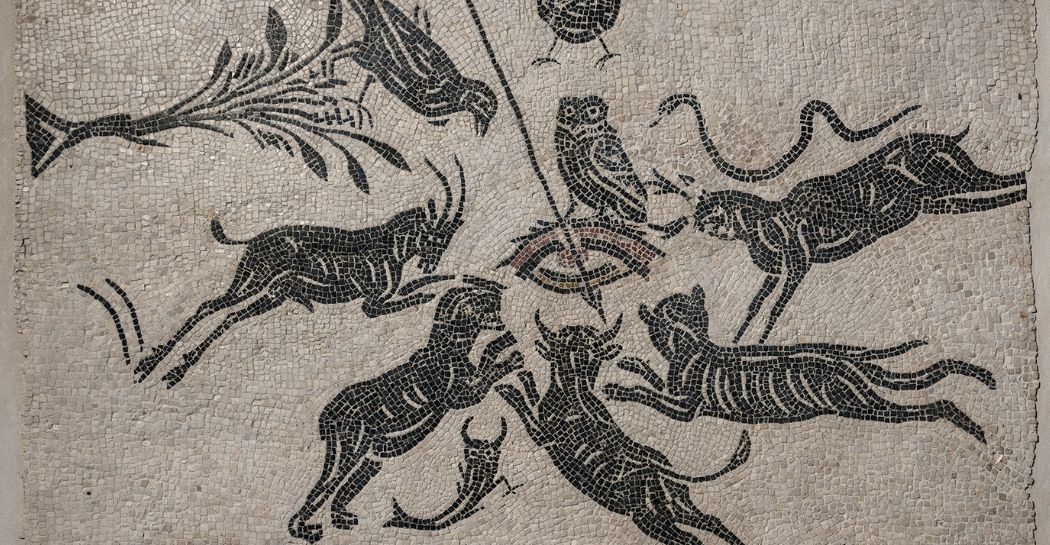
1009646
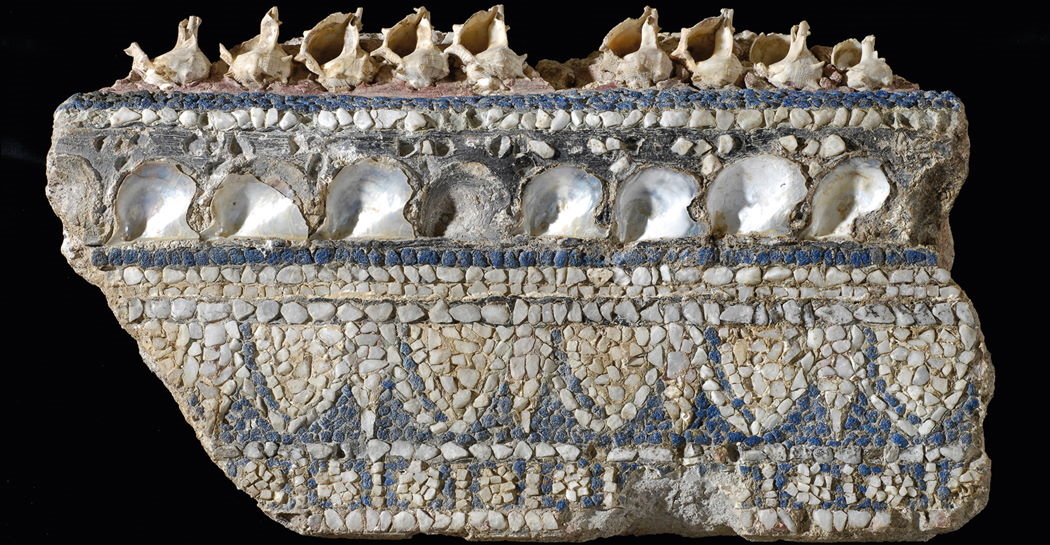
1009339
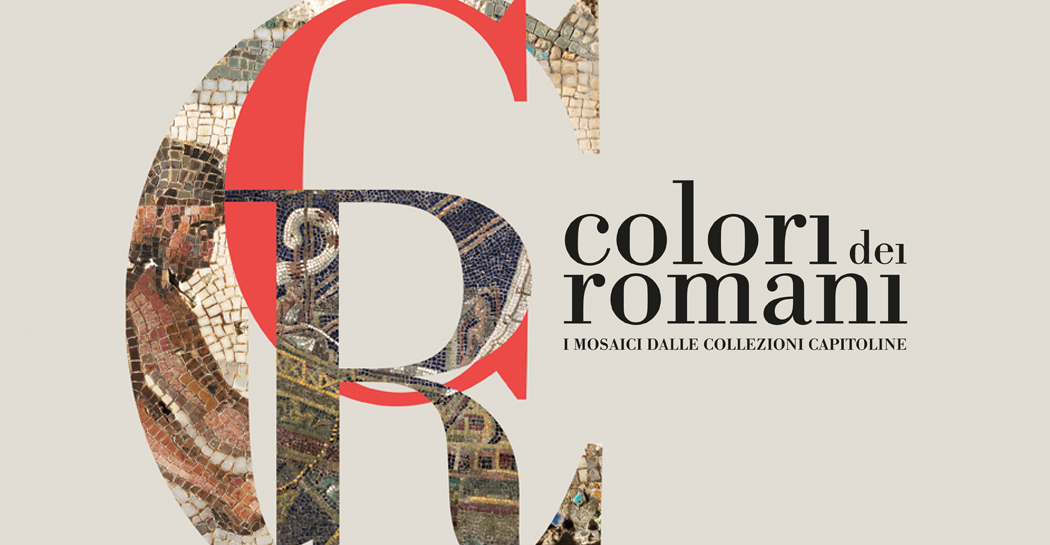
1008780
